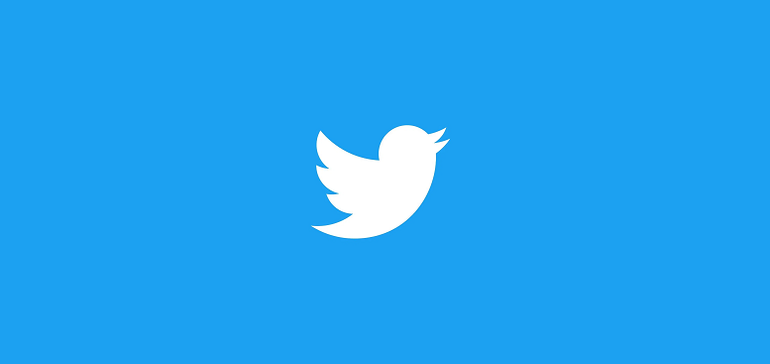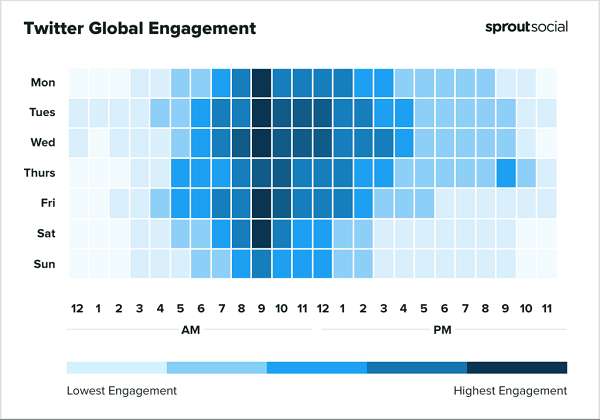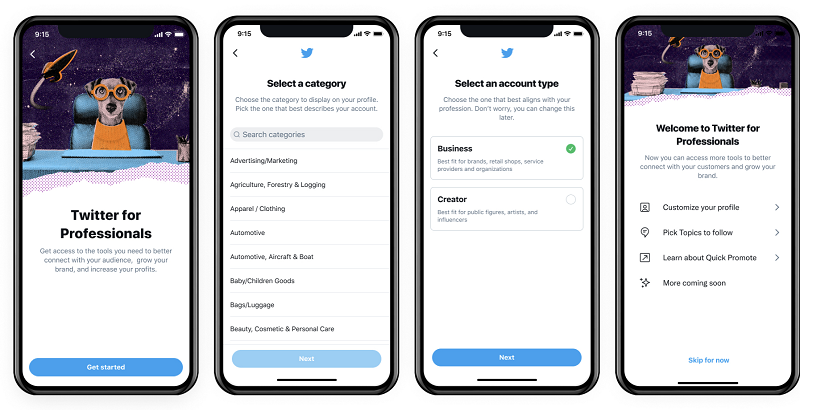SOCIAL
Planning for 2023: Twitter Posting Tips

Looking for ways to improve your social media marketing performance in 2023?
Over the first few weeks of the year, we’re publishing a series of tips and notes on how to maximize your efforts, including pointers on new tools like ChatGPT and DALL-E, and how these evolving apps can assist in your content planning process.
We’ve already covered the following elements:
The next step is platform-specific tips, and how you can use each app to best effect.
We’ve already covered Facebook posting tips, now we move on to the next app – Twitter.
Which, of course, has been going through a massive internal shift of late. Here are some tips on how you can use Twitter to best effect in 2023.
Key considerations
First off, some notes on Twitter’s most recent changes, and their potential impacts – because whether you like Elon Musk or not, whether you believe in his direction for Twitter or don’t, as a brand, he has added some new considerations for your Twitter strategy, which you need to factor into your approach.
- Twitter hasn’t officially changed its rules around what is and is not acceptable to post on the app. But it has removed its COVID misinformation policy, a topic that Musk has strong opinions on, while Musk has also overseen the reinstatement of tens of thousands of accounts that had previously been banned from the app for sharing harmful content, as measured by the previous regime. Some reports have also indicated that these accounts have gone right back to sharing the same harmful content, and they’re not being banned – so while Twitter hasn’t changed its rules, it is interpreting them in a different way, which could be seen as a risk for brand placement and unintended association.
- Twitter has cut thousands of staff, which has to have some impact on its capacity to deal with issues, and even remain in operational capacity at times. There are signs of degradation and increased error rates, and that could also relate to ad placement, performance, issues resolution, etc. Twitter has also, more recently, cut a lot of its international staff, and shut down local offices, which will impact local knowledge and connection to regional markets. Twitter is still up and running right now, and the external impacts have been relatively limited. But it’s another consideration for brands looking to put more time and effort into the app.
- Twitter may, at some stage, limit the reach of brand that don’t pay to subscribe to its coming ‘Verification for Organizations’ package. Like its $8 verification Twitter Blue plan, Twitter’s also looking to charge brands for their own gold verification tick, along with other benefits. There’s not a lot to go on at this stage, but Twitter has already flagged that Blue subscribers will eventually be given priority placement in reply chains. That could also mean that brands will get the same benefit, as a means to push more businesses to pay to use the app. Depending on the cost (which Twitter also hasn’t shared yet), brands will need to weigh the benefits of this upcoming push.
Again, none of these are definitive deal-breakers, as such, but they are elements for brands to factor into their consideration.
How you view each will come down to your personal perspective.
Tweeting tips
One of the key changes on Twitter over the last few years has been the de-prioritization of hashtags, at least as recommended by Twitter’s own team.
Twitter has, in some circumstances, been advising brands against the use of hashtags, as it can distract from your focus goal – i.e. getting people to click on your links.
This, for example, comes from Twitter, in relation to tweet ads:
“Whenever possible, keep your ad free of #hashtags and @mentions. We know that it’s tempting, but they’re distracting, clickable opportunities that drive people off your ad and away from your content. Provide only one exit point, whether that’s clicking through to your website or your app, to keep your message laser-focused.”
That’s not definitive, but it is a consideration – but if you want to include tags, I would suggest that you research the most relevant and focused tags for your niche.
Apps like Hashtagify can help in this respect, providing insight on hashtag popularity and usage. Also, when using hashtags, you should use camel-case capital letters for clarity (e.g. #WednesdayWisdom). This also ensures that screen readers can better communicate the relevant tags for vision-impaired users.
Hashtags have traditionally had more power on Twitter, because Twitter’s algorithm is less sophisticated, and influential, than, say, the News Feed algorithm on Facebook. Twitter’s generally been able to lean on users to be more overt in their audience targeting through hashtags – though Twitter is now looking to evolve, most notably by inserting more and more tweets from profiles that you don’t follow into the main feed.
Twitter also recently added in a ‘Following’ feed that’s just a side-swipe away, so you can get away from these recommendations if you want. But over time, Twitter’s hoping that it’ll be able to refine its algorithms to the point that people will find these inserted tweets beneficial, leading to broader discovery and engagement.
Which could help to generate more exposure for your brand content, by highlighting your tweets to more interested users. It’s not there yet, but it could be an element to note, and to keep tabs on exactly which tweets Twitter’s looking to insert into user feeds.
In terms of your tweet content, Twitter advises that brands should adhere to a ‘three C’s’ approach for optimal tweeting:
- Concise
- Clear
- Conversational
What does concise mean in tweet terms, where you’ve only got 280 characters to work with anyway?
As per Twitter:
“The best performing Tweets are only 50-100 characters”
Brevity has always been the central tenet of tweet engagement – which is why many users are opposed to longer tweets, which are also in development.
And as you can see, the best performers are significantly shorter than the max tweet length, while prompting discussion – the ‘conversational’ element listed above, is also key to sparking engagement, and building community around your presence.
It’s not always easy, but the best tweets are short, to the point, and engaging.
One tool that could be of benefit here is ChatGPT, which is able to come up with tweets based on either text or request prompts.
For example, you can enter in all or part of a blog post, then ask ChatGPT to summarize it into a tweet.
You can also enter in tweets that have done well, maybe from your competitors or based on general Twitter search, and ask ChatGPT to give you similar ideas based on those templates.
For example, you can use Twitter’s advanced search tools to uncover the top-performing tweets using your target keywords, and list them based on engagement (likes, comments, retweets). Entering ‘basketball shoes min_faves:100’ into Twitter search, for example, will show you all the tweets that mention ‘basketball shoes’ and have at least 100 likes.
That’ll give you some idea of the top tweet conversations in your product/service segment. Put the best examples into a list, feed them into ChatGPT, and see what comes out.
That could be a good way to spark more engagement, and align with the relevant Twitter community.
In terms of content formats, tweets with video see the most engagement, followed by tweets with GIFs, photos, then plain text.
Twitter Spaces can also provide a different approach to community engagement, and could work as an alternative to, say, Twitter chats, which facilitate broader discussion.
On best times to post, according to analysis conducted by Sprout Social last year, the best times to tweet to reach the broadest audience, in general, are Mondays, Tuesdays, Wednesdays, Fridays and Saturdays at 9 am, in your local time zone.

As you can see, according to Sprout’s insights, that morning block between 9am and 12pm is when people are more actively consuming tweets, which could help guide your thinking.
In regards to how often you should tweet, the tweet stream moves fast, so you can get away with posting more regularly, as you’re unlikely to overwhelm your followers. Once per day should be the baseline, then building from there based on your own analysis and audience response data.
Professional Accounts
Another consideration on Twitter is its ‘Professional Accounts’ option, which enables brands to convert their Twitter profile to a business account to access additional features.

Those features include:
- Additional analytics – Professional accounts can access a dedicated dashboard of analytics tools to track performance
- Professional Category – Pro accounts can signify what their business is on their profile, which could help to highlight your business to relevant users
- Profile Spotlights – Twitter’s also added a range of ‘Spotlight’ options for professional profiles, which enable you to showcase your products, location, contact info and more in a dedicated profile section. The current Spotlights available are: location, shopping, mobile app link, CTA link
- Twitter Shopping – Pro accounts can also access Twitter’s evolving shopping features – though hard to tell how much emphasis Twitter will be putting on shopping as part of its ‘Twitter 2.0’ revamp, at least at this stage
These additional elements could be of benefit for your business, while as noted, Twitter’s also developing its ‘Verification for Organizations’ subscription element, through which, business users will be able to apply for a gold checkmark, and additional features.
Some of these Professional Account tools could be built into this offering, but it’s all in flux at present – though it’ll be worth keeping tabs on how this evolves, and how Twitter looks to develop its pitch to business users.
Look, there’s a lot going on at Twitter right now, and some people will be opposed to brands even considering putting more focus on the app, given the various changes being implemented by Musk and his team, as detailed above.
But Twitter is still a key driver of news and opinion, and at 238 million daily actives, it remains an important consideration for brand outreach.
Some will view Twitter as getting back on the right track, others will say that it’s falling off. But there may be opportunities within that, and it may still be a great platform for connecting with a broader audience and building brand awareness.
SOCIAL
Snapchat Explores New Messaging Retention Feature: A Game-Changer or Risky Move?

In a recent announcement, Snapchat revealed a groundbreaking update that challenges its traditional design ethos. The platform is experimenting with an option that allows users to defy the 24-hour auto-delete rule, a feature synonymous with Snapchat’s ephemeral messaging model.
The proposed change aims to introduce a “Never delete” option in messaging retention settings, aligning Snapchat more closely with conventional messaging apps. While this move may blur Snapchat’s distinctive selling point, Snap appears convinced of its necessity.
According to Snap, the decision stems from user feedback and a commitment to innovation based on user needs. The company aims to provide greater flexibility and control over conversations, catering to the preferences of its community.
Currently undergoing trials in select markets, the new feature empowers users to adjust retention settings on a conversation-by-conversation basis. Flexibility remains paramount, with participants able to modify settings within chats and receive in-chat notifications to ensure transparency.
Snapchat underscores that the default auto-delete feature will persist, reinforcing its design philosophy centered on ephemerality. However, with the app gaining traction as a primary messaging platform, the option offers users a means to preserve longer chat histories.
The update marks a pivotal moment for Snapchat, renowned for its disappearing message premise, especially popular among younger demographics. Retaining this focus has been pivotal to Snapchat’s identity, but the shift suggests a broader strategy aimed at diversifying its user base.
This strategy may appeal particularly to older demographics, potentially extending Snapchat’s relevance as users age. By emulating features of conventional messaging platforms, Snapchat seeks to enhance its appeal and broaden its reach.
Yet, the introduction of message retention poses questions about Snapchat’s uniqueness. While addressing user demands, the risk of diluting Snapchat’s distinctiveness looms large.
As Snapchat ventures into uncharted territory, the outcome of this experiment remains uncertain. Will message retention propel Snapchat to new heights, or will it compromise the platform’s uniqueness?
Only time will tell.
SOCIAL
Catering to specific audience boosts your business, says accountant turned coach

While it is tempting to try to appeal to a broad audience, the founder of alcohol-free coaching service Just the Tonic, Sandra Parker, believes the best thing you can do for your business is focus on your niche. Here’s how she did just that.
When running a business, reaching out to as many clients as possible can be tempting. But it also risks making your marketing “too generic,” warns Sandra Parker, the founder of Just The Tonic Coaching.
“From the very start of my business, I knew exactly who I could help and who I couldn’t,” Parker told My Biggest Lessons.
Parker struggled with alcohol dependence as a young professional. Today, her business targets high-achieving individuals who face challenges similar to those she had early in her career.
“I understand their frustrations, I understand their fears, and I understand their coping mechanisms and the stories they’re telling themselves,” Parker said. “Because of that, I’m able to market very effectively, to speak in a language that they understand, and am able to reach them.”Â
“I believe that it’s really important that you know exactly who your customer or your client is, and you target them, and you resist the temptation to make your marketing too generic to try and reach everyone,” she explained.
“If you speak specifically to your target clients, you will reach them, and I believe that’s the way that you’re going to be more successful.
Watch the video for more of Sandra Parker’s biggest lessons.
SOCIAL
Instagram Tests Live-Stream Games to Enhance Engagement

Instagram’s testing out some new options to help spice up your live-streams in the app, with some live broadcasters now able to select a game that they can play with viewers in-stream.
As you can see in these example screens, posted by Ahmed Ghanem, some creators now have the option to play either “This or That”, a question and answer prompt that you can share with your viewers, or “Trivia”, to generate more engagement within your IG live-streams.
That could be a simple way to spark more conversation and interaction, which could then lead into further engagement opportunities from your live audience.
Meta’s been exploring more ways to make live-streaming a bigger consideration for IG creators, with a view to live-streams potentially catching on with more users.
That includes the gradual expansion of its “Stars” live-stream donation program, giving more creators in more regions a means to accept donations from live-stream viewers, while back in December, Instagram also added some new options to make it easier to go live using third-party tools via desktop PCs.
Live streaming has been a major shift in China, where shopping live-streams, in particular, have led to massive opportunities for streaming platforms. They haven’t caught on in the same way in Western regions, but as TikTok and YouTube look to push live-stream adoption, there is still a chance that they will become a much bigger element in future.
Which is why IG is also trying to stay in touch, and add more ways for its creators to engage via streams. Live-stream games is another element within this, which could make this a better community-building, and potentially sales-driving option.
We’ve asked Instagram for more information on this test, and we’ll update this post if/when we hear back.
-

 PPC4 days ago
PPC4 days ago19 Best SEO Tools in 2024 (For Every Use Case)
-

 PPC7 days ago
PPC7 days ago4 New Google Ads Performance Max Updates: What You Need to Know
-
SEARCHENGINES6 days ago
Daily Search Forum Recap: April 16, 2024
-

 MARKETING6 days ago
MARKETING6 days agoWill Google Buy HubSpot? | Content Marketing Institute
-

 SEO6 days ago
SEO6 days agoGoogle Clarifies Vacation Rental Structured Data
-

 PPC7 days ago
PPC7 days agoShare Of Voice: Why Is It Important?
-
SEARCHENGINES5 days ago
Daily Search Forum Recap: April 17, 2024
-

 PPC7 days ago
PPC7 days agoHow to Collect & Use Customer Data the Right (& Ethical) Way
















You must be logged in to post a comment Login